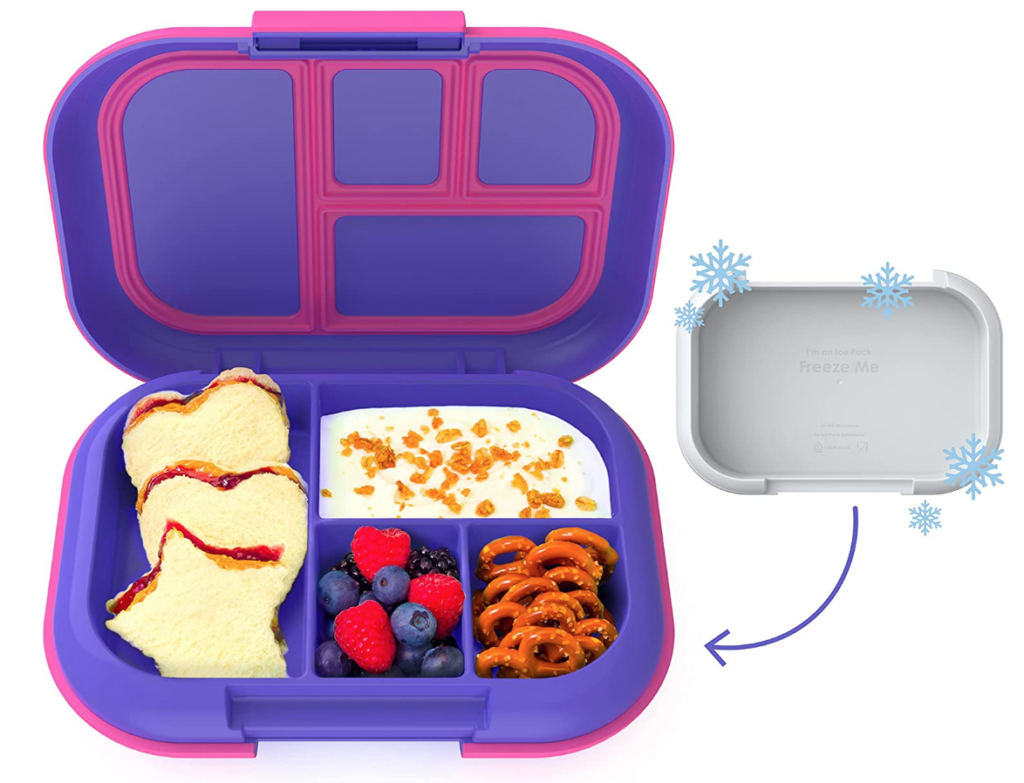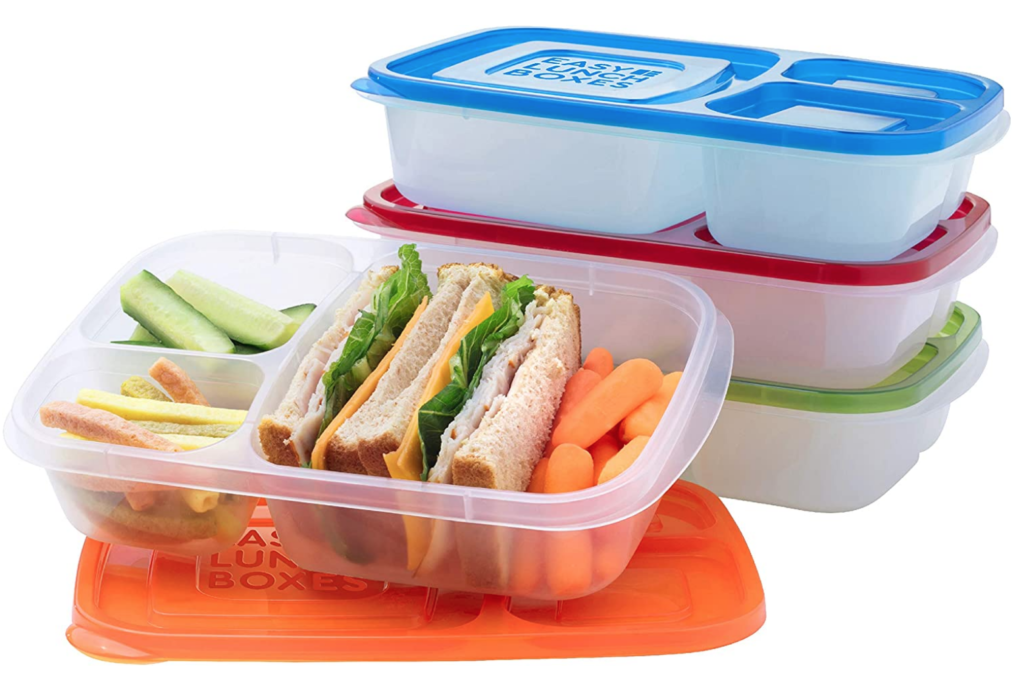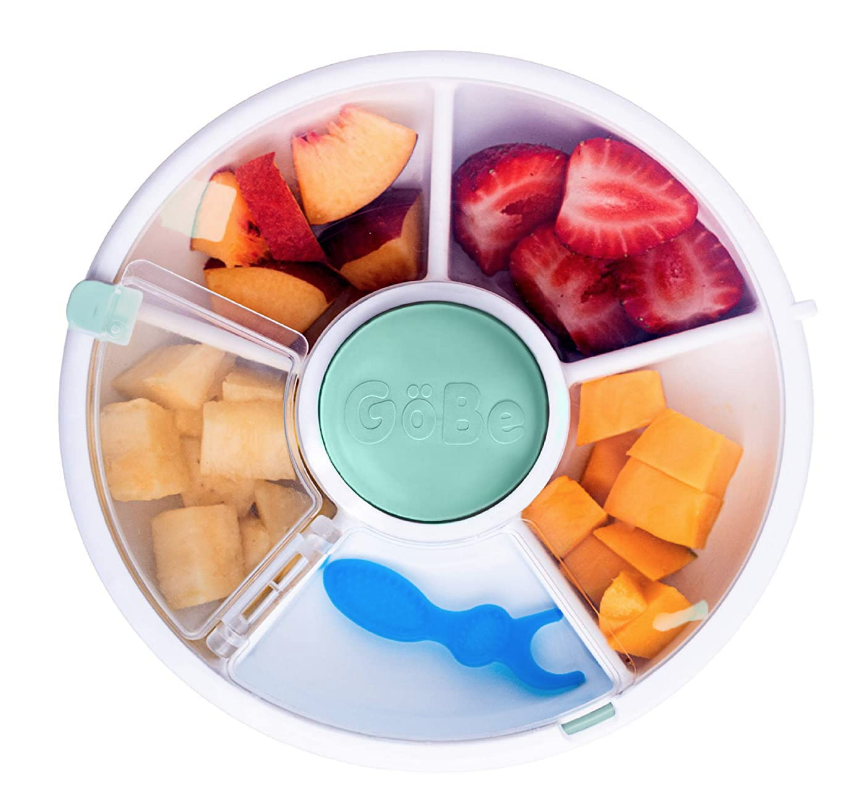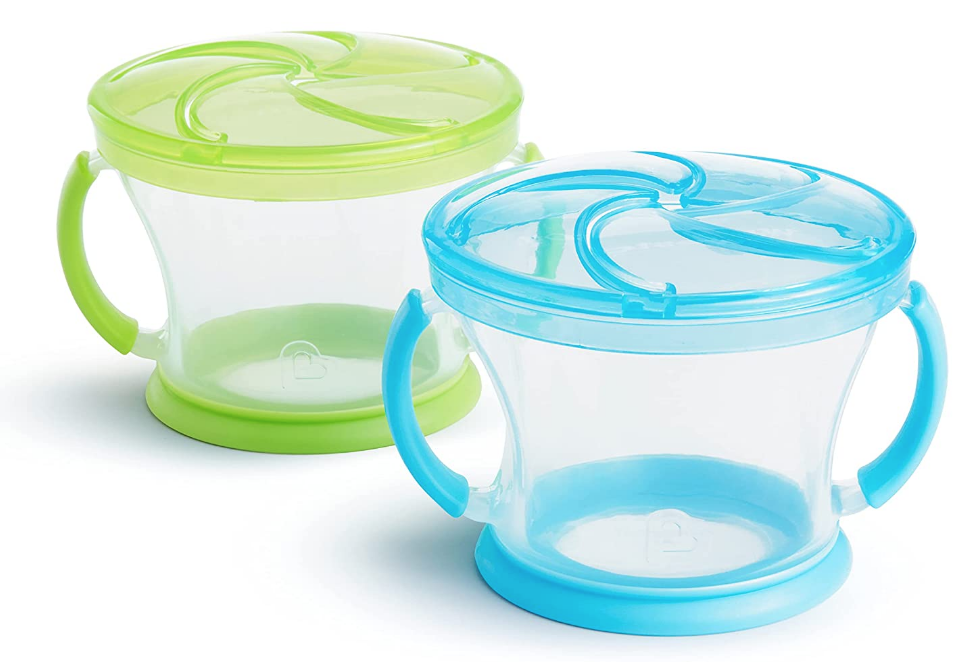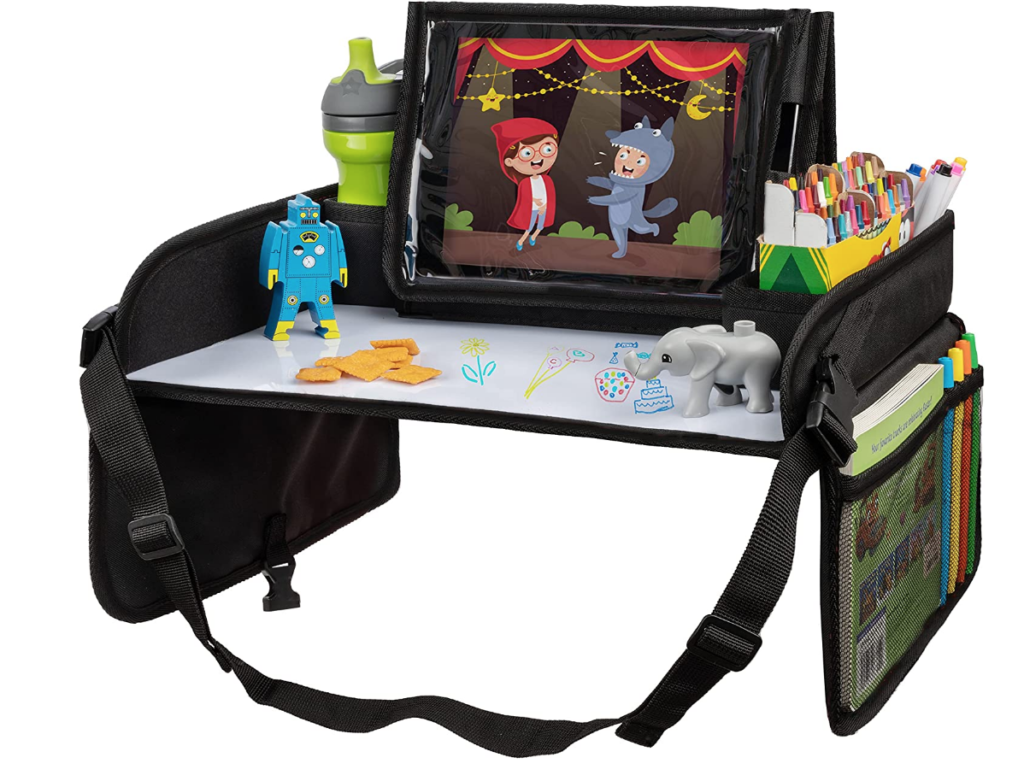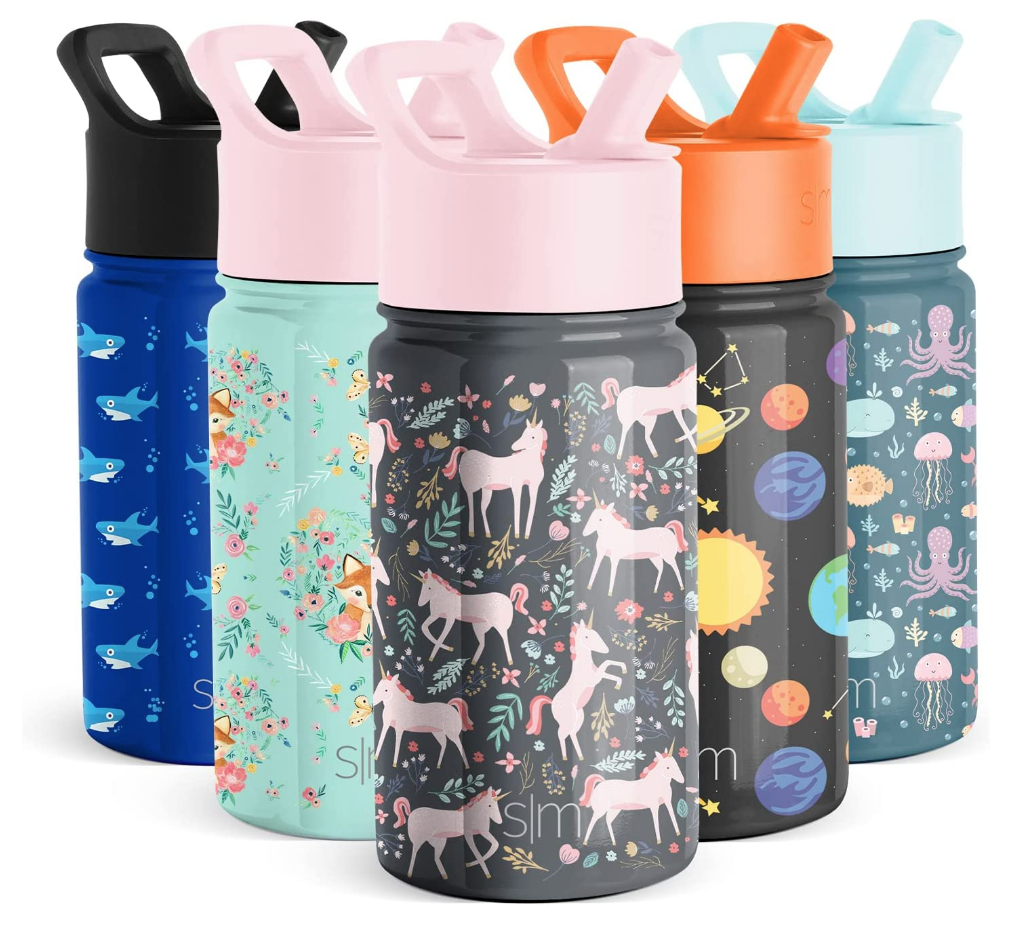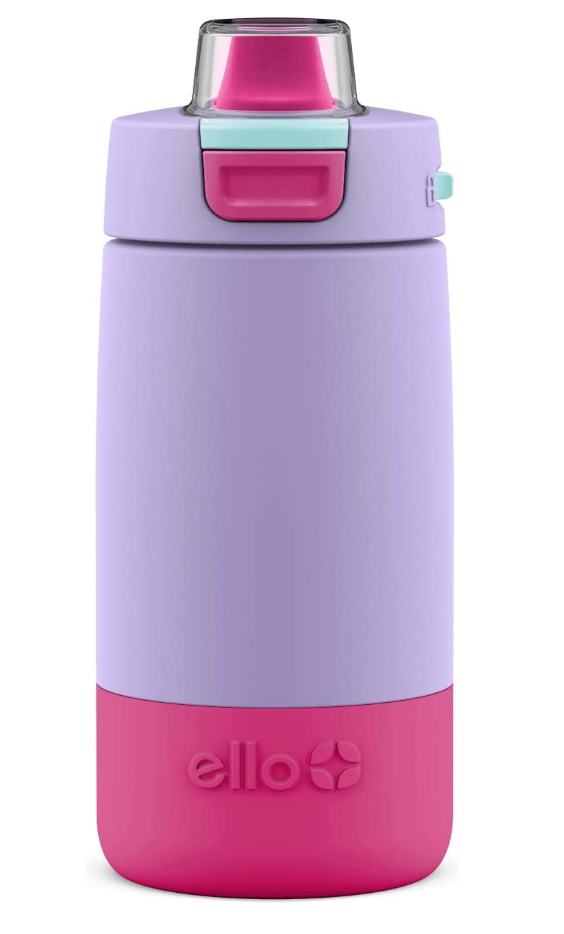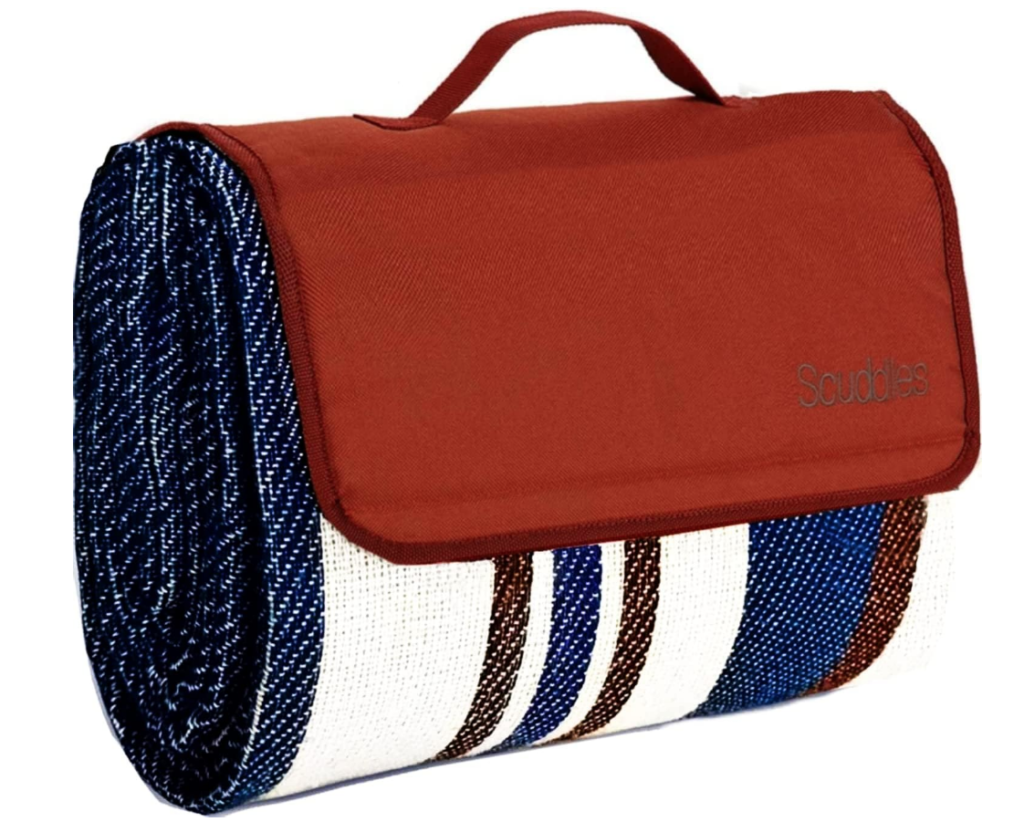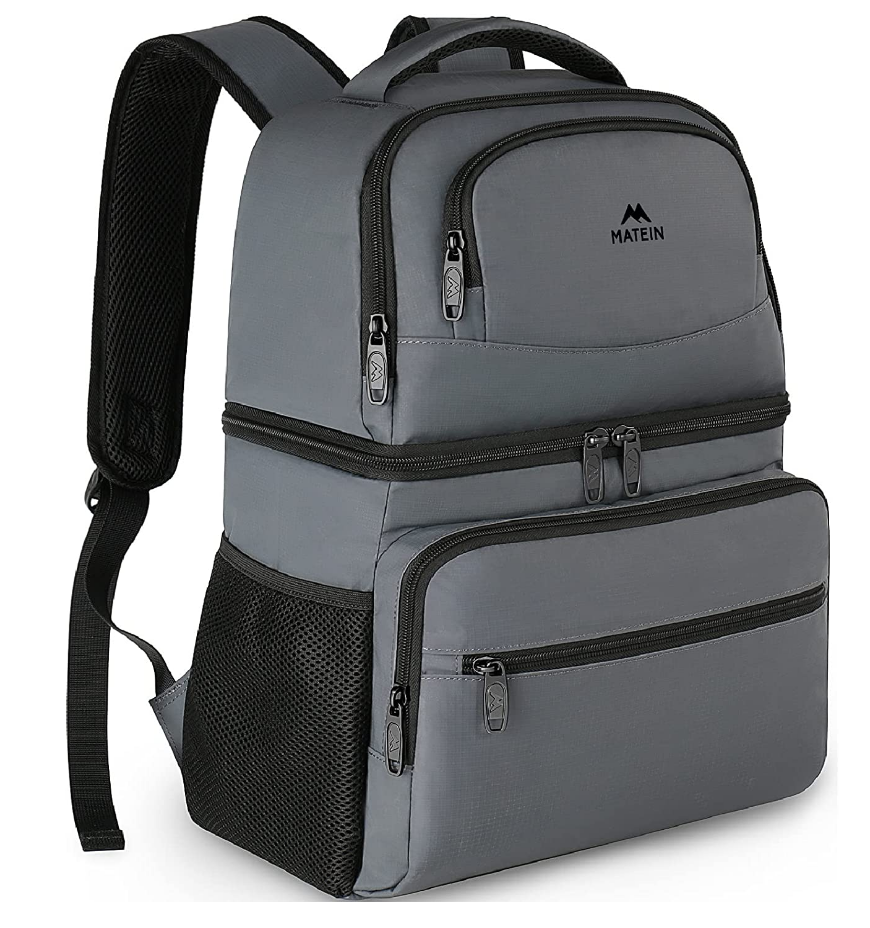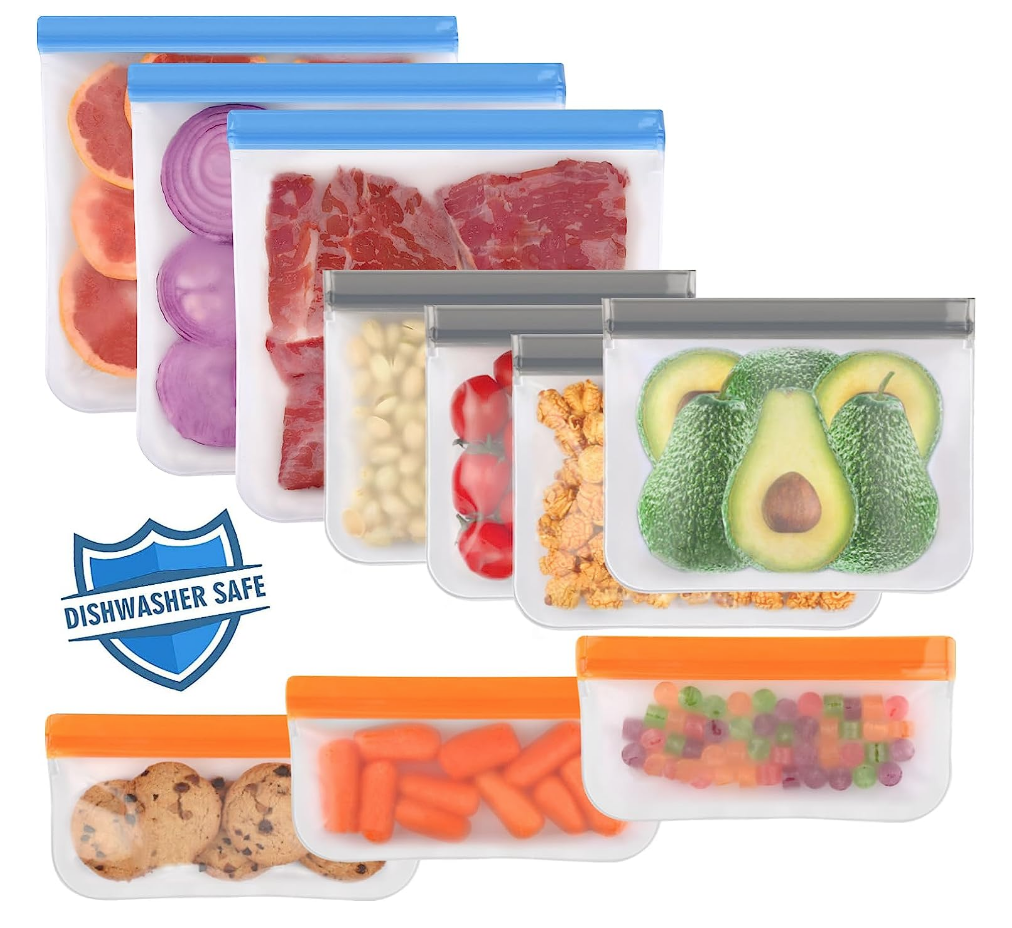This post may contain affiliate links. If you shop from one of our links, we may earn a commission.
Vacations hold a special place in my heart. Every Summer growing up we would take a trip as a family. Some of my fondest childhood memories were made on vacation. And now my husband and I are fortunate enough to create those traditions with our kids. As we are preparing for our trip this Summer I thought it would be helpful to pass on some tips I have gathered over the years in regards to travel snacks for kids and eating away from home.
Let’s be honest, eating on the road (especially with kids) can be tricky. Our diets generally consist of fewer fruits and vegetables and more added sugar when traveling. But that’s okay because we know this isn’t the norm. However, snacks are a great opportunity to fill in the nutrition gaps that they may not be getting while frequenting restaurants. When planning for snacks, aim to include a fruit or vegetable paired with a grain or protein to provide more opportunities for variety and meeting nutrient needs.
Packing meals and snacks for road trips are more budget-friendly and prevents kids from hangry meltdowns in the middle of nowhere. Plus, by the end of the trip, most family members agree they just want to eat a salad after so much fast food. Now don’t get me wrong, there is no shame in hitting the drive-through. My family too, does our fair share of that on the road. But sometimes you need well-balanced meals and snacks to get you through the busyness of travel and activities. These tips will provide you with all the travel essentials to ensure your family can eat well while traveling along with dietitian and kid-approved road trip snack ideas.
Game Plan
In order to ensure you are set for the trip, you will want first to determine a few key details.
– How long is your trip?
– What will your schedule look like during the week?
– How many meals and snacks do you want to pack?
– What is the best way to store and pack your food while traveling?
Once you have a good idea of what your schedule will look like, you can start to plan your meals and snacks accordingly.
Packing Food for Travel
I have learned over the years that proper storage containers are an absolute game-changer when traveling! When you have the right gear you can avoid a huge mess, unnecessary leaking, spills, soggy sandwiches, and foods that have sat in the temperature danger zone for too long due to poor insulation. Below are some storage containers I would recommend for a long road trip.
Bento Boxes
Bento boxes have held the test of time in our home thanks to many school lunches, but they are also great for packing a picnic lunch in the car. What I love about them is that they keep each food separate to prevent meltdowns from things like ranch running into a pb&j sandwich. IYKYK. The hard outer shell makes them easy to stack while avoiding smashed food.
Here are some of my family’s favorite lunchboxes:
Snack Containers
Younger kids generally consume 2-3 snacks per day. Try to throw in some nutrient-dense foods such as fruits and vegetables with some of the snacks to balance out their options. Consuming adequate sources of fruits and vegetables while traveling can be more difficult. Keeping a routine and structure to meals and snacks can be tricky. You may find your kids tend to be more hungry due to increased activities so make sure to pack extra snacks. Snack containers are reusable and allow everyone to have their preferred items in individual portions. Below are some favorite kid and toddler snack containers.
Mess-free eating
Eating meals and snacks while driving is always tricky, especially with little ones. These travel cup holder trays for young kids help keep food from spilling all over your car.
Waterbottles
Water should always be the first choice for hydration. Keeping a water bottle handy will help encourage your child to stay hydrated while on the go. Fruit-infused water is also a great option if your child is not a great water drinker.
Kids don’t need juice, but if you like to offer it try to keep the serving size to 4oz of 100% fruit juice for kids ages 1-3 and 4-6oz for kids ages 4-6 according to the American Academy of Pediatrics.
Picnic must-haves
One of my kids’ favorite things to do is have a picnic. Something about eating outside in a different location just makes it all the more exciting. Packing a picnic is also a great choice to avoid the extra cost of dining out and providing a more balanced meal. I was introduced to an actual picnic blanket a few years ago and have not gone back. I love the waterproof barrier on one side but it has a nice blanket material on the other.
Perishable snacks that need to be kept cold such as string cheese, eggs, sliced fruits, and vegetables should be held at 40 degrees Fahrenheit or longer to prevent bacteria. Any perishable items that are not kept chilled should be tossed after four hours. Be sure to throw some ice packs in your cooler to use for day trips on your vacation. You can freeze water bottles, squeeze pouches, or freeze grapes to help keep items cold while being able to enjoy them on the long car ride. A reliable cooler bag you know will keep your food cold for a long time is a must. Check out some of these options:
Reduce waste
Reusable snack bags are perfect for trips as an environmentally friendly option. They are also convenient to keep in the car for restaurant leftovers or to pack extra snacks at your hotel to take during the day.
Healthy Travel Snacks For Kids To Take On The Go
Packing fresh produce is always a great travel food option. When able, balance the snack with a fruit or vegetable and grain or protein. Here are some favorite healthy road trip snacks to enjoy on long car rides or to take while exploring.
- String cheese
- Hard crackers (not as many crumbs)
- Trail mix
- Mini muffins
- Dried fruit such as raisins
- Fresh fruit such as strawberries, apple slices, and mandarin oranges
- Hard-boiled eggs
- Yogurt tubes (we like to freeze ours to use as an ice pack and the kids enjoy them frozen or thawed)
- Fruit pouches
- Granola bars
- Veggies such as baby carrots, celery sticks, bell peppers, and cucumbers
- Low-sugar fruit snacks such as Bear Fruit Snack minis
- Dry cereal
- Mini That’s It bars
- Mini Lara bars
- Skout Organic Kid’s Snack Bar
- Shelf stable milk
- Pretzels
- Beef Jerky
- Overnight oats for a more hearty snack/meal
- Nuts and seeds: almonds, pistachios, walnuts, pecans, cashews, etc. Make sure your child is old enough to tolerate these without choking.
- Bamba Puffs
- Peanut butter cups for dipping fruit or veggies
- Harvest Snap Peas
- Freeze-dried fruit
- Make your own iron-rich snack mix of Cheerios, raisins, and freeze-dried strawberries.
- Amara Smoothie Melts
- Hippeas Chickpea Puffs
- That’s It Crunchables
- Whisps Cheese Crisps
Breakfast options to pack for your stay
Every family is different in how they choose to eat while traveling. My family personally prefers to keep breakfasts simple but satisfying. We are generally excited to get out the door to have fun so breakfasts are not overly time intensive. But I also know since we will be out and about my kids will need a meal that can help sustain them throughout the morning.
Aim to include a carb and protein with some fat at breakfast.
Carbohydrate options include whole grains, fruit, milk, yogurt, and starchy vegetables.
Protein options include meat, nuts, dairy, tofu, eggs, and beans.
Breakfast ideas:
- Overnight oats – There are tons of variations to this easy recipe online. The best part is that you prepare it the night before so you can grab them quickly in the morning or even take them on the go.
- Breakfast smoothies – Prepare smoothie mixes at home before your trip and freeze. This can double as ice packs and then be used for breakfast at the place you’re staying. Just make sure to check that they have a blender beforehand.
- Breakfast burritos – Breakfast burritos are a quick and easy option. Match a batch before your trip, freeze, and pack in a cooler. Pop them in the microwave in the morning.
- Omelets in a cup – My family loves this recipe and we make it during the week for a high-protein breakfast option on busy mornings. Check out this video on how to make them. Pair it with a side of fruit to complete the meal.
- Muffins – This is another recipe that is simple to make in advance, freeze, and take on the go. Muffins are also a great idea for snacks. Our favorite muffin recipe is these fruit and veggie muffins by Super Healthy Kids. They taste great and are packed with nutrients. They are best made as mini muffins and are a great option for picky eaters to be introduced to the flavor without the anxiety of eating the actual food.
- Yogurt parfaits – Mix in your kid’s favorite fruit and granola into a high-protein yogurt.
How to get back into an eating routine post-vacation
Adjusting from a long trip can be difficult as meal and snack time routines have all been disrupted. Our kids’ expectations around meals may also look different. Typically we don’t eat the same way when traveling. They may get a sweet treat more often than when at home or meal choices include more preferred items due to being able to pick items they enjoy at restaurants. You may be feeling mom-guilt about what the meal choices looked like during your trip. Sometimes that feeling of anxiety causes us to swing the total opposite way in feeding when we return home. You may feel the need to control your child’s food options more. Below are some tips for returning to regular eating patterns at home.
Restock your fridge
One of the first tasks upon returning from vacation is to restock your fridge so you have meals and snacks prepared. Sometimes we feel guilty about allowing ourselves and our family to frequent restaurants or convenience meals so we want to swing to the other side of the spectrum of feeding when we return home. You may desire to make your next grocery order heavy on fruits and vegetables along with items for highly nutritious meals.
This sends a message to our kids that the way we ate on our vacation was “bad” and “unhealthy”. So to make up for our poor eating choices we should only eat healthy foods for a while. Rather, the goal is to practice food neutrality showing that food holds no moral value and being cautious to avoid projecting your own guilt about how your family ate on vacation. While you may feel the urge to alter the snack and meal choices, try to keep food options the same as before you left for your trip. Be sure to offer the same types of snacks and meals they had before as a way to show how they ate then was equally acceptable.
Return to a routine
While you may want to keep your same feeding schedule when on vacation, the reality is that it often gets disrupted by wonky snack times and late-night suppers. If your vacation is at the beginning of Summer it may feel like your trip’s meal and snack-time routine sets the pace for the rest of the Summer break. Keep in mind that it is wise to re-evaluate the routine and rhythm of your family and what works best for your lifestyle. Consider how you want your Summer schedule to look and if your feeding times need to be adjusted. Without routine, we can quickly fall into the trap of our kids grazing all day. This can also lead to more picky eating behaviors. You can read more about creating structure around snacking here.
As you return to a normal schedule, it is worthwhile to review the Satter Division of Responsibility (sDOR) with feeding. The Satter Division or Responsibility (sDOR) is an evidence-based approach to feeding that provides guidelines to equip and empower parents and kids around mealtimes. It helps kids to develop trust around food and learn to recognize their own hunger and fullness cues. This method was developed by a registered dietitian and feeding expert Ellyn Satter and has been proven to be a highly effective system to bring peace to meal times. This method divides the feeding responsibilities between the parents and kids.
The parents get to decide:
- What the family will eat
- When the family will eat
- Where the family will eat
The kids get to decide:
- Whether they will eat the food provided
- How much do they want to eat
While it may feel tempting to push nutrient-dense foods after a week of unbalanced meals, remember the sDOR. It will benefit your whole family to promote a healthy relationship with eating and food neutrality. You can learn more about the Division of Responsibility here.
In Summary
Eating while on the road or away from home can be tricky. But you can still be successful with the right planning. Check out this blog post for more delicious snack ideas for you, cause moms need to eat too!

